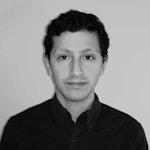Influence of Facade Materials on the Acoustic Environment
Sign in and Register
Create an Account
Overview
Abstract
Urban noise pollution is a major environmental health problem. International organizations are making efforts to prevent health damage due to high levels of noise in cities, but the design of the built environment typically neglects the acoustic impact of architectural projects. Building facades, covering a substantial part of the vertical surfaces of the urban fabric, have a significant effect on the wellbeing of the population and on the environmental impact of buildings. Facade geometries and materials interact with the diversity of sounds in the city composing soundscapes that influence the health, comfort, and productivity of people inside and outside of buildings. This study gives an overview of the elements involved in the composition of the urban soundscape and revises the potential effects of sound-reflective and sound-absorptive facades. With the purpose of exemplifying the integration of acoustic data into facade design processes, a parametric design workflow is developed to experiment with acoustic simulations of a street environment, alternating between sound-reflective and sound-absorptive facades.
Authors

Alvaro Balderrama, M.Eng. LEED Green Associate
Research Associate
University of Applied Sciences, Ostwestfalen-Lippe
alvaro.balderrama@th-owl.de

Daniel Arztmann, Prof. Dipl-Ing. M.Eng.
Head of Building Physics
Schüco International KG
DArztmann@schueco.com

Jens-Uwe Schulz, Prof. Dipl-Ing.
University of Applied Sciences, Ostwestfalen-Lippe
jens-uwe.schulz@th-owl.de
Keywords
Introduction
In recent decades, the world has experienced unprecedented urban growth. In 2015, close to 4 billion people (54% of the world’s population) lived in cities and that number is projected
Access Restricted
Background
Potential effects of sound-reflective façades
The Henninger Tower was a grain storage silo located in Frankfurt, Germany, built by Henninger Brewery in 1961. The 120 m, 33-storey, reinforced concrete tower was
Access Restricted
Method
As described by Vorländer (2007), for the scope of predicting the exterior sound field, the absorption coefficient and the scattering coefficient for random incidence are important input data used in
Access Restricted
Explanation
The workflow in Rhinoceros 3D, Grasshopper and Pachyderm Acoustic allows integrating acoustic data from different façade materials in a façade design process that benefits from the interoperability among these software
Access Restricted
Conclusion and Future Work
This paper gives an overview of the elements involved in the composition of the urban soundscape, and revises the potential effects of sound-reflective and sound-absorptive façades, including vegetated façades. By
Access Restricted
Rights and Permissions
Arenas, Jorge P. and Francesco Asdrubali. “Eco-materials with noise reduction properties” Handbook of Ecomaterials, 2018.
Arup. “Cities Alive: Green Building Envelope Report”, 2016.
Bielefeld, Hans-Walter and Tejav DeGanyar. "Acoustic Performance of Aluminum Framed Facade Systems" 17.1 - Facade Insulation and protection against outdoor noise, Euronoise 2018.
Brooks, Bennet and Brigitte Schulte-Fortkamp. “The Soundscape Standard.” Inter-Noise Hamburg, 2016.
Cao, Leitao, Qiuxia Fu, Yang Si, Bin Ding and Jianyong Yu. “Porous materials for sound absorption” Composites Communications 10 (2018): 25–35.
Cook, David and David F. Van Haverbeke. “Suburban Noise Control with Plant Materials and Solid Barriers”, 1977.
DeGanyar, Tejav. - Facade Acoustics presentation, 2019.
European Environment Agency. “Noise in Europe” https://www.eea.europa.eu/publ... (accessed February 2019).
International Organization for Standardization – “ISO 9613-1:1993 Acoustics - Attenuation of sound during propagation outdoors”, 1993.
International Organization for Standardization – “ISO 354:2003 Acoustics - Measurement of sound absorption in a reverberation room”, 2003.
International Organization for Standardization – “ISO 140-5:1998 Acoustics - Measurement of sound insulation in buildings and of building elements - Part 5: Field measurements of airborne sound insulation of facade elements and facades”, 1998.
International Organization for Standardization – “ISO 12913-1:2014 - Acoustics – Soundscape - Part 1: Definition and conceptual framework”, 2014.
Kang, Jian. “Acoustics of long spaces: Theory and design guidance”, 2002.
Kang, Jian, Francesco Aletta, Tin Oberman, Mercede Erfanian, Magdalena Kachlicka, Matteo Lionello, Andrew Mitchell. “Towards Soundscape Indices” Proceedings of the 23rdInternational Congress of Acoustics, 2019.
Krimm, Jochen. “Acoustically effective facades”. Architecture and the Built Environment #16, 2018.
Pijanowski, Bryan C., Almo Farina, Stuart H. Gage, Sarah L. Dumyahn, and Bernie L. Krause “What is soundscape ecology? An introduction and overview of an emerging new science”, 2011.
Schüco “Innovation Topics at Bau 2019” https://www.schueco.com/web2/b... April 2019)
Techen, Holger and Jochen Krimm. “Akustische Beruhigung der Stadt”, 2014.
Thomas, Pieter, Timothy Van Renterghem, Ellen De Boeck, Laurent Dragonetti and Dick Bootledooren. “Reverberation-based urban street sound level prediction”, 2014.
Thomazelli, Rodolfo, Fernando Caetano and Stelamaris Bertoli. “Acoustic properties of green walls: absorption and insulation”, 2016.
United Nations "Progress Towards the Sustainable Development Goals", 2017.
Van Renterghem, Timothy, Dick Botteldooren and Kris Verheyen “Road traffic noise shielding by vegetation belts of limited depth.” Journal of Sound and Vibration 331, 2012.
Vorländer, Michael. “Auralization: Fundamentals of Acoustics, Modelling, Simulation, Algorithms and Acoustic Virtual Reality” Springer, 2007.
World Health Organization. “Burden of disease from environmental noise”, 2011.
Yu, Boya, Hui Ma and Jian Kang. “A Hybrid Model for Investigating the Effect of Scattering from Building Facade on Sound Propagation in Street Canyons“, 2019.